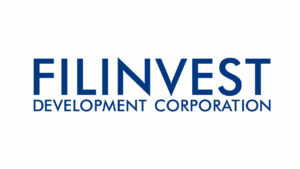IMF cuts Philippine growth outlook

THE INTERNATIONAL Monetary Fund (IMF) slashed its growth forecast for the Philippines this year, saying a “higher for longer policy rate” might be needed to address persistent inflation.
The multilateral lender lowered its Philippine gross domestic product (GDP) growth projection to 5.3% from its 6.2% estimate in July.
This is well below the government’s 6-7% goal, and significantly slower than the 7.6% expansion in 2022.
“The Philippine economy has emerged strongly from the pandemic but has since confronted a confluence of global shocks,” IMF Mission Chief to the Philippines Shanaka Jayanath Peiris said at a press briefing on Tuesday after ending the Article IV consultation mission.
He said the Philippine GDP outlook for this year was lowered after second-quarter growth slowed to 4.3% “due to a weak global economy and tightened policy settings.”
The second-quarter GDP expansion was the slowest in over two years. In the first half, GDP growth averaged 5.3%.
The IMF said it raised its 2024 growth projection for the Philippines to 6% from 5.5%, due to the anticipated “acceleration in public spending and improved external demand for Philippine exports.”
Still, this is well below the government’s 6.5-8% GDP growth target for next year.
“The main downside risks to the outlook include persistently high global and domestic inflation that could necessitate a further tightening of monetary policy, an abrupt global slowdown putting downward pressure on goods and service exports, an intensification in geopolitical tensions, and depreciation pressures stemming from capital outflows under volatile market conditions,” Mr. Peiris said.
He noted that upside risks include a “more resilient US economy and a rebound in domestic demand supported by an easing of financial conditions.”
‘HIGHER FOR LONGER’The IMF expects inflation to rise to about 6% this year before declining to 3.5% in 2024, Mr. Peiris said.
The 2023 inflation forecast is higher than the 5.8% full-year estimate of the Bangko Sentral ng Pilipinas (BSP). The BSP also sees inflation to hit 3.5% next year.
The IMF projects inflation to return to the 2-4% target by the first quarter of next year.
“However, core inflation remains elevated and inflation risks are tilted to the upside, including higher commodity prices that could lead to second-round effects,” Mr. Peiris said.
“Thus, a higher-for-longer policy rate path is warranted until inflation firmly falls within the target range alongside a tightening bias to anchor inflation expectations.”
The BSP raised borrowing costs by 425 basis points from May 2022 to March 2023, bringing the benchmark interest rate to 6.25%, the highest in nearly 16 years. The Monetary Board has since paused its tightening.
Meanwhile, the IMF sees the current account deficit narrowing to -3% of GDP in 2023 and -2.6% in 2024 from -4.5% in 2022.
The BSP projects the current account deficit to reach $11.1 billion (-2.5% of GDP) this year.
The current account deficit will be “supported by lower commodity prices, a pickup of electronic exports, and an acceleration in service exports,” Mr. Peiris said.
The Philippine banking sector remains well-capitalized and liquid, but higher interest rates remain a risk, he said.
“The higher interest rate environment underscores the importance of strengthening systemic risk monitoring and financial supervision, expanding the macroprudential toolkit, as well as calibrating it to counter vulnerabilities stemming from sectoral exposures and linkages between financial conglomerates and nonfinancial corporates,” Mr. Peiris said.
The IMF also told the Philippines to step up efforts against money laundering and terrorist financing so it can be removed from the Financial Action Task Force’s “gray list.”
The Philippines has been included in the global “dirty money” watchdog’s gray list of countries subjected to increased monitoring since June 2021.
FISCAL POLICYMeanwhile, Mr. Peiris said the government’s fiscal consolidation plan is on track, reflecting strong revenue performance and lower current spending.
He also noted that the government’s pace of consolidation is “appropriate” enough to bring the debt-to-GDP ratio to below 60% by 2025.
As of end June, the government debt as a share of GDP stood at 61%, slightly above the 60% threshold considered by multilateral lenders to be manageable for developing economies.
However, the government can still ramp up revenue-generating measures, Mr. Peiris said.
“An even more ambitious revenue mobilization strategy could finance more social spending to achieve poverty reduction goals and to respond to natural disasters while keeping the deficit path unchanged,” he added.
Mr. Peiris noted that key reforms such as the military and uniformed personnel (MUP) pension system reform and the budget modernization bill are “critical and should be complemented by ongoing efforts to strengthen the oversight of government-owned and -controlled corporations.”
“The renewed emphasis on financing the country’s infrastructure gaps through public-private partnerships (PPPs) is well placed and the new PPP Code is welcome in this regard. The reform of the mining fiscal regime and Mining Act provides an opportunity to enact a progressive and unified tax system, and a competitive investment regime,” he added. — Keisha B. Ta-asan




